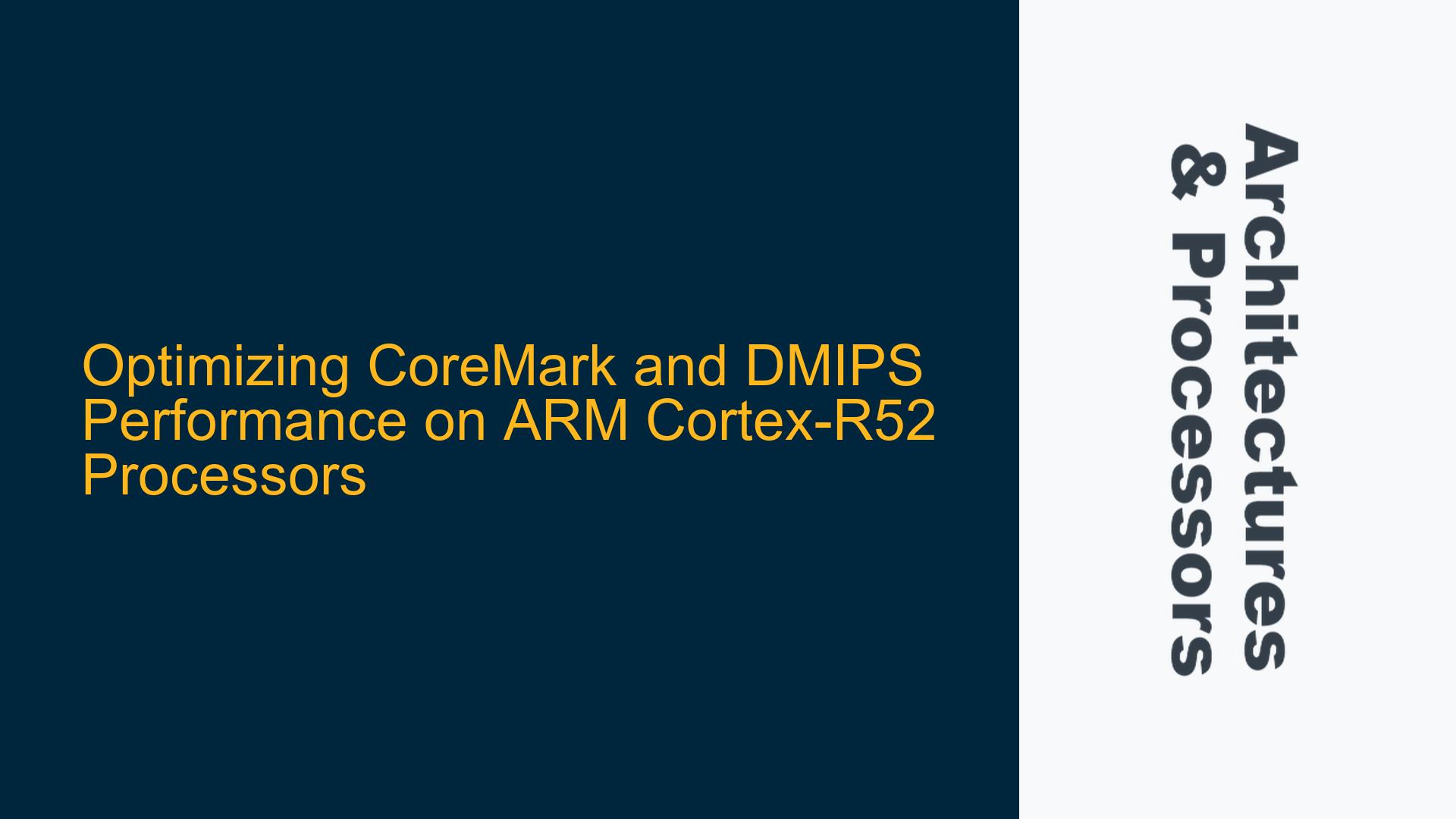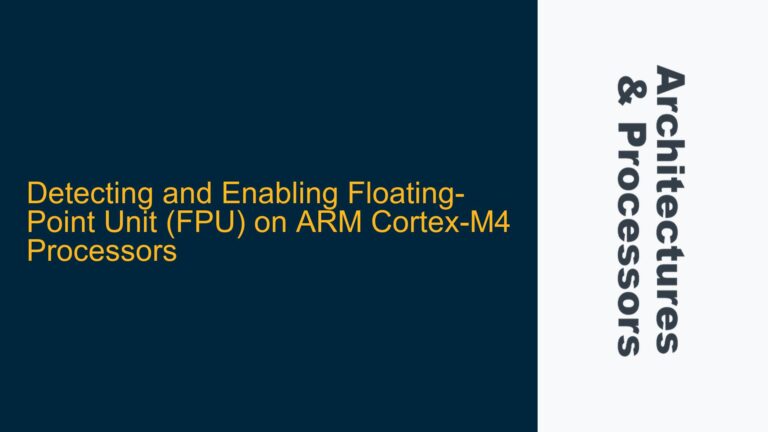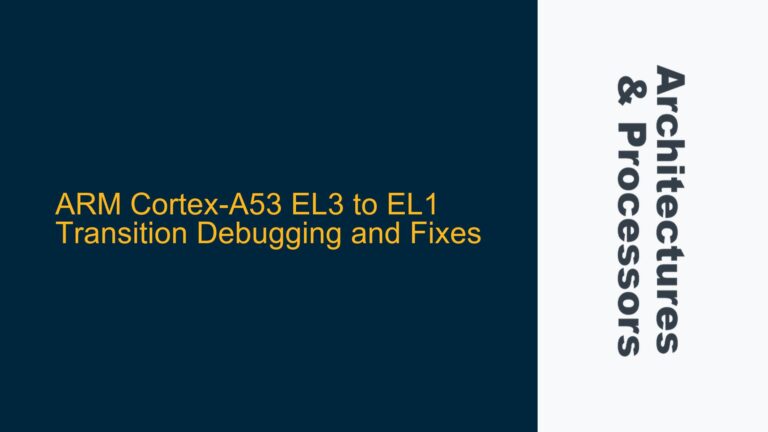Understanding Cortex-R52 CoreMark and DMIPS Performance Metrics
The ARM Cortex-R52 is a high-performance real-time processor designed for safety-critical applications, offering features like dual-core lockstep, error correction, and advanced fault tolerance. Its performance is often measured using industry-standard benchmarks such as CoreMark and DMIPS (Dhrystone MIPS). CoreMark is a modern benchmark that evaluates the efficiency of a processor’s core by running a set of algorithms, while DMIPS measures the processor’s ability to execute Dhrystone instructions per second, normalized to the VAX 11/780.
The Cortex-R52 specifications indicate a performance range of 2.09 to 2.72 DMIPS/MHz and 4.3 CoreMark/MHz. These metrics are highly dependent on several factors, including the compiler used, compiler optimization flags, memory subsystem configuration, and the specific implementation of the processor within an SoC. When developers observe significantly lower CoreMark or DMIPS scores than expected, it often points to suboptimal configuration or implementation choices.
The discrepancy between the expected and observed performance metrics can stem from inefficient compiler settings, improper memory alignment, cache misconfigurations, or even subtle hardware-software interaction issues. For instance, the Cortex-R52’s dual-issue pipeline and out-of-order execution capabilities require careful tuning to achieve peak performance. Without proper alignment between the software and hardware, the processor may not fully utilize its architectural advantages, leading to underwhelming benchmark results.
Compiler Selection, Optimization Flags, and Memory Subsystem Configuration
One of the primary factors influencing CoreMark and DMIPS performance on the Cortex-R52 is the choice of compiler and its associated optimization flags. ARM processors, including the Cortex-R52, are typically compiled using ARM’s own compiler (ARM Compiler), GCC-based toolchains, or LLVM-based toolchains. Each compiler has its own set of optimization flags and default behaviors, which can significantly impact performance.
For example, ARM Compiler provides advanced optimization options tailored for ARM architectures, such as -O3 for high-level optimizations, -mcpu=cortex-r52 for architecture-specific tuning, and -ffast-math for aggressive floating-point optimizations. GCC-based toolchains offer similar flags, but their effectiveness can vary depending on the version and configuration. LLVM-based toolchains, such as Clang, are known for their modularity and modern optimization techniques but may require additional tuning for real-time systems.
The memory subsystem configuration also plays a critical role in achieving optimal performance. The Cortex-R52 features a Harvard architecture with separate instruction and data caches, which must be properly configured to minimize latency and maximize throughput. For instance, enabling cache prefetching and ensuring proper cache line alignment can significantly improve benchmark scores. Additionally, the memory controller settings, such as burst length and arbitration policies, must be optimized to match the processor’s access patterns.
Another often-overlooked aspect is the impact of memory barriers and synchronization primitives on performance. The Cortex-R52’s out-of-order execution capabilities require careful use of memory barriers to ensure correct program behavior, but excessive use can degrade performance. Developers must strike a balance between correctness and efficiency by strategically placing memory barriers only where necessary.
Profiling, Debugging, and Optimizing Cortex-R52 Firmware for CoreMark and DMIPS
To diagnose and resolve performance issues on the Cortex-R52, developers should follow a systematic approach that includes profiling, debugging, and iterative optimization. The first step is to profile the firmware using tools like ARM’s Streamline Performance Analyzer or third-party alternatives. These tools provide insights into CPU utilization, cache behavior, and memory access patterns, helping identify bottlenecks.
Once bottlenecks are identified, developers can use debugging tools like ARM DS-5 or Lauterbach TRACE32 to inspect the firmware’s execution flow and pinpoint inefficiencies. For example, excessive cache misses or branch mispredictions can be traced back to specific code segments, which can then be optimized. Techniques such as loop unrolling, function inlining, and data structure alignment can significantly improve performance.
Compiler optimization flags should be revisited and fine-tuned based on profiling results. For instance, enabling link-time optimization (LTO) can improve performance by allowing the compiler to optimize across translation units. Similarly, using architecture-specific intrinsics and assembly code for critical sections can further enhance performance.
Finally, developers should validate their optimizations by re-running the CoreMark and DMIPS benchmarks and comparing the results against the expected metrics. This iterative process ensures that all potential performance bottlenecks are addressed and that the Cortex-R52 operates at its full potential.
By following these steps, developers can achieve optimal CoreMark and DMIPS performance on the Cortex-R52, ensuring that their real-time applications meet the demanding requirements of safety-critical systems.






